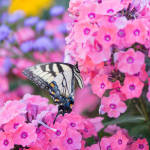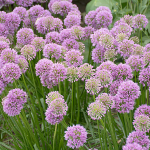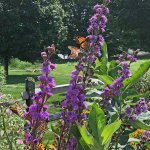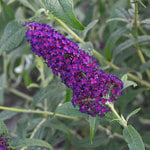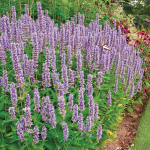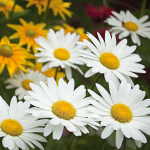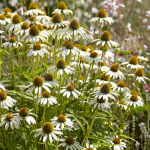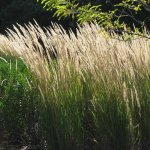Product Details
Asclepias tuberosa Gay Butterflies Mix is a brilliantly colored mix of native butterfly weed in shades of fiery red, orange, and yellow, blooms in June through August, when flowers appear in dense clusters. Butterfly weed adds sizzle to the hot-colored border and is magical with Liatris, Echinacea and native Grasses such as Little Bluestem and Prairie Dropseed (Sporobolus heterolepis). Slim, decorative seed pods, coveted by flower arrangers, later open to release papery seeds on silky parachutes. A favorite of pollinators and other beneficial insects, these well-behaved drought-tolerant milkweeds, essential for the survival of Monarch butterflies, are avoided by deer. They require well-drained soil. Asclepias tuberosa was named Perennial Plant of the Year® by the Perennial Plant Association. Because we cannot guarantee the complete assortment of bloom colors in this seed mix, we offer the plants in multiples of 3 in order to help provide a sampling of the full color range.
Of the 200 species in the genus Asclepias, the best known are North American wildflowers. They have small, curiously shaped blooms that appear in dense clusters. These plants provide nourishment for Monarch butterflies through all their life stages, and are essential for their survival.
For more information on the growing and care of Asclepias tuberosa, click Growing Guide.
How to see a 3D model of this item1. Click on the 3D Model image in the image gallery.
2. A pop up will open with the 3D model of the item. You can move the 3D model around with your mouse if on a computer or with your finger on your device. The 3D model represents a mature plant that is approximately 3 years old.
How to use (AR) Augmented Reality to see this item in your garden1. Make sure your device has a camera and is connected to the internet. If you want to see the item in your garden and are on your computer, click the 3D Model image on your computer and a QR code will open that will allow you to open the link on your device.
2. Once you have clicked the 3D Model image on your device, go outside and face your device camera toward where you would like to see how the item will look in your garden.
3. To see the item in your own garden, click on the [AR] link in the lower right-hand corner of the screen. You might need to wait a few seconds for the AR experience to load. This only works from a device with a camera such as a mobile phone or a tablet.
4. Allow your device to access the camera, if prompted.
5. Point your device's camera at the area where you want to place the plant or garden.
6. The website will use Augmented Reality to place a virtual image of the item in the space you are looking at through your device’s camera. You can adjust the position of the virtual item by using two fingers to resize the item, or one finger to move the item around the screen, until you're satisfied with how it looks. To get an accurate sense of the size of this item, we recommend measuring out the area where you would like to plant it (the spacing for this item is 12"), and staking or flagging the borders so that you will have an accurate idea for the mature size of the item while using AR (the magnifier only enlarges the 3D model of the item, it does not change the actual size of the item). The 3D model represents a mature plant that is approximately 3 years old.
7. Move your device around to view the item from different angles and get a better idea of how it will look in your garden.
8. Once you have everything lined up, take a screenshot or tap the screen to show the AR experience controls and press the white circle to take a photo of the AR image to save it for future reference.
9. If you decide to purchase the item, you can use the AR image as a reference for placement in your garden.
Shipping
HOW PLANTS ARE SHIPPED
The size of the plants we ship has been selected to reduce the shock of transplanting. For some, this means a large, bareroot crown. Others cannot travel bareroot or transplant best if grown in containers. We ship these perennials and annuals in 1 pint pots, except as noted. We must point out that many perennials will not bloom the first year after planting, but will the following year, amply rewarding your patience. We ship bulbs as dormant, bare bulbs, sometimes with some wood shavings or moss. Shrubs, Roses, vines, and other woody plants may be shipped bareroot or in pots. The size of the pot is noted in the quick facts for each item.
WHEN WE SHIP
We ship our bulbs and plants at the right time for planting in your area, except as noted, with orders dispatched on a first-come, first-served basis by climate zone. We also ship a wide range of containers and planters, tools, supplies, fertilizers, garden wear, garden decor items, as well as indoor decorations like wreaths and dried bouquets when available. Estimated dates for shipping are indicated in the green Shipping Details box for each item. Please supply a street address for delivery. Kindly contact us with two weeks notice, if you'll be away at the expected time of delivery.
OUR GUARANTEE
We guarantee to ship plants that are in prime condition for growing. If your order is damaged or fails to meet your expectations, we will cheerfully replace or refund it. Please contact our Customer Service Department at 1-800-503-9624 or email us at [email protected]. Please include your order number or customer number when contacting us.
Reviews
Average Customer Rating:
 (14 Reviews)
Write a Review
(14 Reviews)
Write a Review
Sort by:
slow taking off but now they are amazing 
A viewer from TN
28 of 28 people found this review helpful. Do you? yes no Certified buyer
Tried and True, just picky SEEDS MUST HAVE WATER 
Cheryl Nelson from Pennsylvania
Just won't take for me 
A viewer from KY
I am sorry to learn you have not had success with these plants on two occasions and I have emailed you directly regarding this.
Sincerely,
Cathy
16 of 18 people found this review helpful. Do you? yes no Certified buyer
Aslepias Gay Butterflies 
A viewer from Statesville, NC
192 of 192 people found this review helpful. Do you? yes no Certified buyer
Asclepias Gay Butterrflies 
Cindi from Statesville, NC
I am sorry to learn the Asclepias purchased in 2018 did not survive. As all of our perennial plants are guaranteed for a full year from the time received I will be contacting you via email regarding compensation.
Sincerely,
Cathy
21 of 35 people found this review helpful. Do you? yes no Certified buyer
Growing guide
Latin Name Pronunciation: uh-sklee'pee-us
The genus Asclepias, commonly known as Milkweed, comprises more than 100 species, the best known of which are North American wildflowers. They have small, curiously shaped blooms that appear in clusters and are irresistible to butterflies. Milkweed is the host plant for Monarch butterflies - it is the only food source for Monarch caterpillars, and the butterflies will breed only where Milkweeds are found.
Asclepias tuberosa is native to eastern North America and is commonly referred to as Butterfly Weed. It blooms in June and July and makes a fine addition to a hot-colored border. It Butterfly weed needs well-drained soil and full sun. Swamp milkweed, Asclepias incarnata, grows naturally in moist soil rich in organic matter. It is well-adapted to good garden soil, and can take some shade. Both milkweed species are polite clumping perennials that may modestly self-sow, but will not spread underground.
Grow Guide for Asclepias incarnataPlant Asclepias incarnata in moisture-retentive soil, rich in organic matter, in full sun or part shade. Swamp milkweed is a natural in rain gardens, sunny borders and wet meadows.
This perennial milkweed is quite late to emerge from dormancy in spring. Mark the location or leave 6" of stem if you cut back after killing frost, so you don't plant something on top of them.
Cut plants back by 1/3 to 1/2 in early summer to encourage strong bushy growth. More stems mean more flowers. Deadheading early blooms often results in a second flowering about a month later.
This genus, commonly known as Milkweed, consists of many North American native species, and is most notable for attracting butterflies. Their flowers are excellent nectar sources, and the plants are the sole host for the larval stage of the Monarch butterfly. Use Asclepias incarnata in pollinator gardens, pond edges, rain gardens, sunny borders, and wet meadows.
Grow Guide for Asclepias tuberosaAsclepias tuberosa grows best planted in hot, baking full sun. It requires well-drained, not overly rich soil and will thrive even in nutrient-poor sandy or gravelly soils.
This perennial milkweed is quite late to emerge from dormancy in spring. Mark the location, leave 6" of stem if you cut back after killing frost, or simply leave the plant standing through winter, so you don't plant something on top of them.
Cut plants back by 1/3 to 1/2 in early summer to encourage strong bushy growth. More stems mean more flowers. Deadheading early blooms often results in a second flowering about a month later.
This genus, commonly known as Milkweed, consists of many North American native species, and is most notable for attracting butterflies. Their flowers are excellent nectar sources, and the plants are the sole host for the larval stage of the Monarch butterfly. Use Asclepias tuberosa in pollinator gardens, sunny borders, and meadows.

